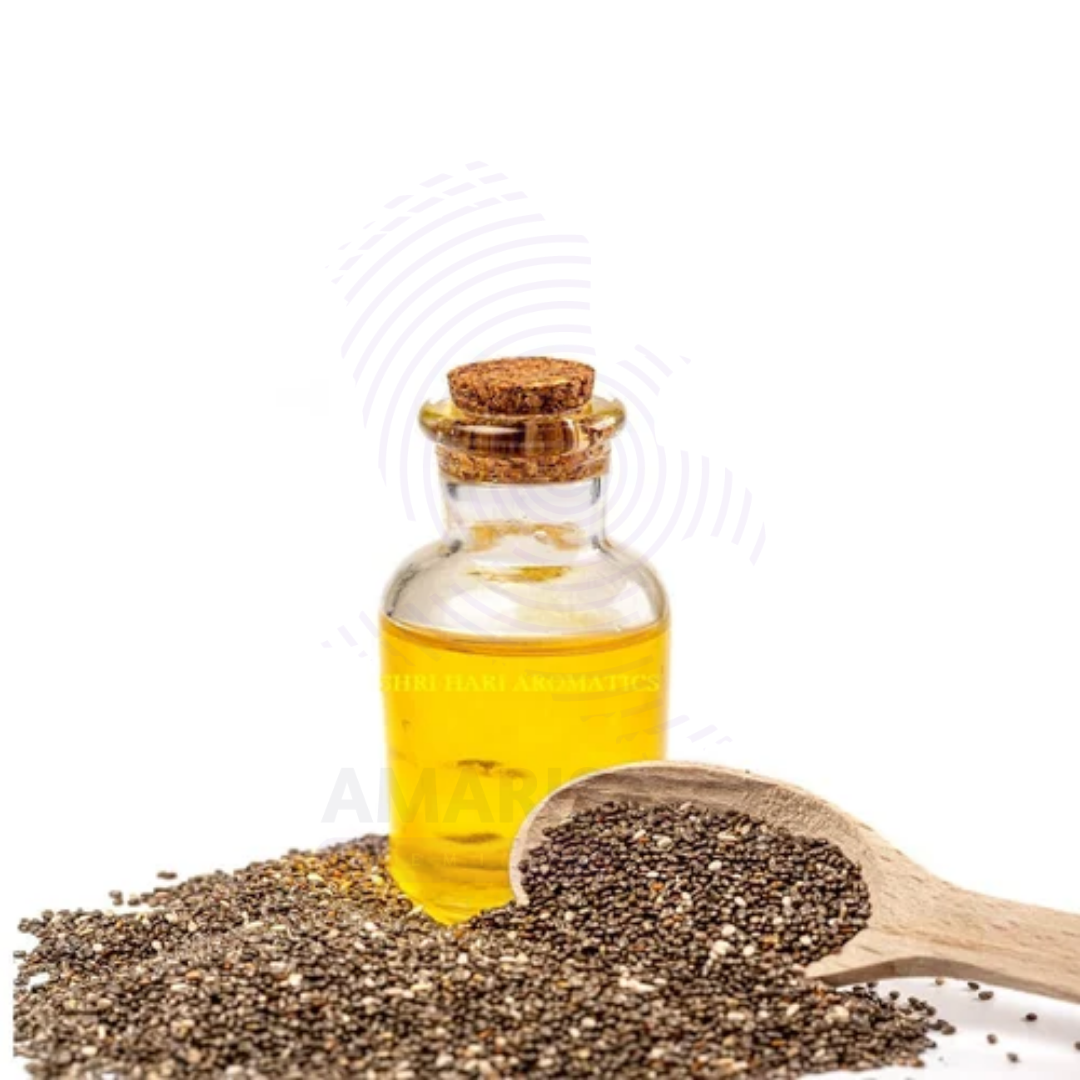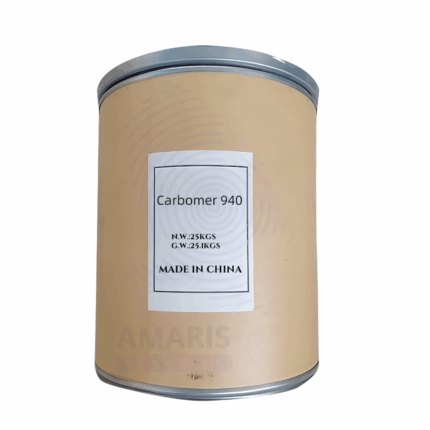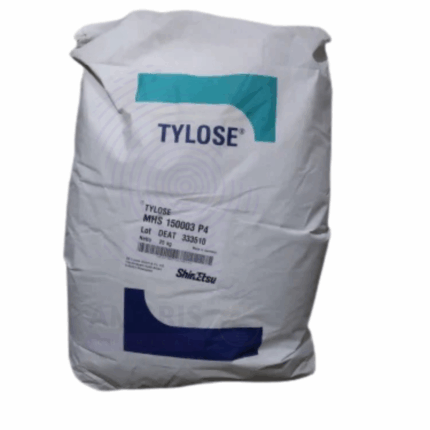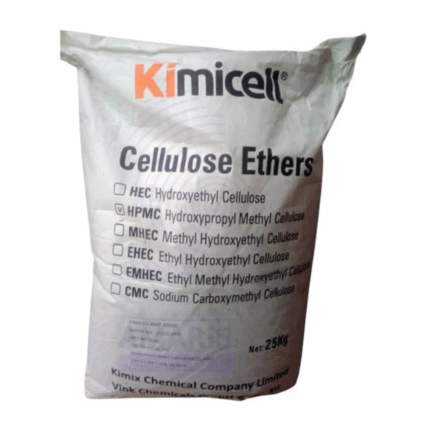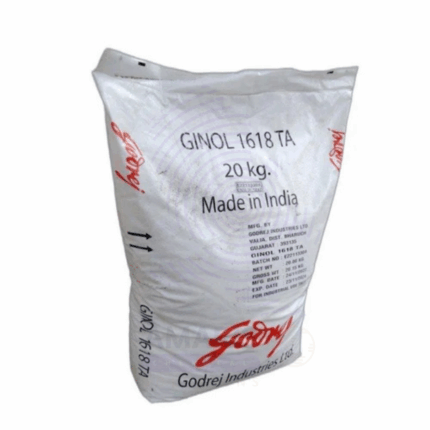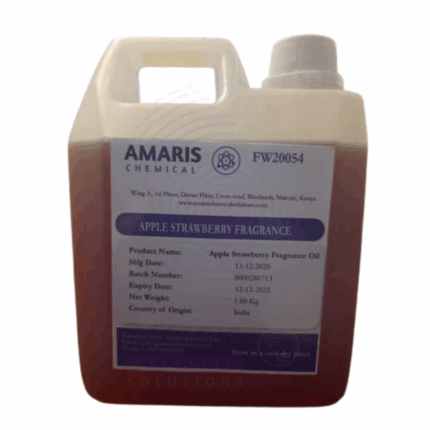
Apple Strawberry Fragrance Oil
$ 19.90 Original price was: $ 19.90.$ 19.79Current price is: $ 19.79.
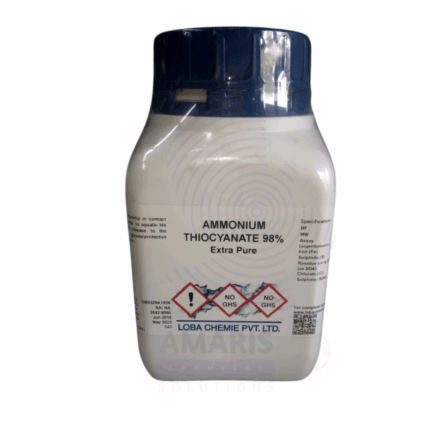
Ammonium Thiocyanate Extra Pure
$ 19.00 Original price was: $ 19.00.$ 18.54Current price is: $ 18.54.
Chia Oil
Whatsapp Order
Chia Oil is a cold-pressed, nutrient-rich oil derived from the seeds of the Salvia hispanica plant, native to Central and South America. This light, fast-absorbing oil is celebrated for its exceptionally high content of omega-3 fatty acids (especially alpha-linolenic acid), antioxidants, vitamins, and phytonutrients. It has a mild, nutty aroma and is typically golden in color.
Due to its powerful antioxidant and anti-inflammatory properties, Chia Oil is used extensively in cosmetics, personal care, nutraceuticals, and food products. It helps support skin barrier function, reduce redness, and improve skin elasticity and hydration. In food and dietary supplements, it’s valued for its cardiovascular, brain, and skin health benefits.
Description
Table of Contents
Toggle
Chia Oil
Primary Uses
- Cosmetics and Personal Care
- Used in facial oils and serums for hydration, anti-aging, and elasticity enhancement.
- Added to moisturizers and creams to calm inflammation and strengthen skin barrier.
- Included in formulations for eczema- or rosacea-prone skin due to its soothing properties.
- Blended into eye creams and under-eye treatments for its antioxidant action.
- Used in hair oils and scalp treatments to nourish follicles and soothe irritation.
- Added to conditioners, masks, and styling creams for softness and frizz control.
- Formulated into lip balms and glosses for hydration and omega-rich nourishment.
- Incorporated in beard oils, aftershave balms, and men’s grooming blends.
- Used in nail and cuticle treatments to improve flexibility and reduce brittleness.
- Included in baby products like oils and creams for its gentle and nutrient-rich profile.
- Aromatherapy & Wellness
- Used as a carrier oil in massage blends to deliver essential oils gently and effectively.
- Incorporated in aromatherapy blends for mature, dry, or inflamed skin conditions.
- Blended into after-sun and recovery formulations for replenishment and skin comfort.
- Food and Beverage Industry
- Used in functional food and dietary supplements as a rich source of plant-based omega-3.
- Incorporated in salad dressings, nutrition bars, smoothies, and health drinks (food-grade only).
- Used in vegan and keto formulations as a nutritional lipid.
- Included in beauty-from-within supplement capsules for skin and hair health support.
- Pharmaceutical and Nutraceutical
- Used in softgel and capsule formulations as a plant-based alternative to fish oil.
- Explored in therapeutic dietary programs for cardiovascular, joint, and cognitive support.
- Blended into nutraceutical oils targeting inflammation and oxidative stress.
- Topical Applications
- Applied directly to dry, cracked, or inflamed skin to restore moisture and comfort.
- Blended into ointments and herbal balms for soothing and barrier reinforcement.
- Used in post-shave and after-wax care products to reduce redness and replenish skin.
- Included in anti-stretch mark and scar serums for elasticity and regeneration.
Secondary Uses
- Spa and Therapeutic Products
- Used in massage oils and luxury facial treatments for lightweight hydration.
- Added to scrubs and wraps for skin nourishment and detox support.
- Blended into body mists, bath oils, and wellness infusions.
- Natural Makeup and Beauty
- Incorporated in foundations, BB creams, and tinted moisturizers for softness and glide.
- Used in lipsticks and balms for omega-rich conditioning.
- Added to eye and cheek products for antioxidant protection.
- Green and Sustainable Formulations
- Used in clean beauty and zero-waste formulations for its biodegradable, plant-based profile.
- Included in vegan product lines as a sustainable, non-animal fatty acid source.
- Pet and Animal Care
- Occasionally used in natural pet supplements for omega-3 content (under veterinary guidance).
- Added to pet grooming oils and conditioners for coat health.
- Industrial and Specialty Applications
- Used in eco-conscious brands as a key botanical oil for its functional skin and health properties.
- Incorporated in wellness-focused product lines and nutraceutical formulations.
KEY PRODUCT FEATURES
1. Basic Identification Attributes
- Botanical Name: Salvia hispanica
- Common/Trade Name: Chia Oil / Chia Seed Oil
- INCI Name: Salvia Hispanica Seed Oil
- CAS Number: 93384-40-8
- HS Code: 1515.90
- Synonyms: Chia Seed Oil, Omega-3 Oil, Salvia Oil
2. Physical & Chemical Properties
- Physical State: Liquid carrier oil
- Color & Odor: Light golden to pale yellow; mild, nutty aroma
- Solubility: Insoluble in water; soluble in alcohol and fixed oils
- Refractive Index: 1.470 – 1.480
- Specific Gravity: 0.920 – 0.940
- Main Components: Alpha-linolenic acid (omega-3), linoleic acid, oleic acid, tocopherols
3. Safety & Hazard Attributes
- GHS Classification: Not classified as hazardous
- Toxicity: Non-toxic when used properly; safe for food and topical use (when pure)
- Exposure Limits: No established occupational limits
- Allergen Information: Generally hypoallergenic, but perform patch test before first use
4. Storage & Handling Attributes
- Storage Conditions: Store in a cool, dark, and dry place to prevent oxidation
- Container Type: Amber glass bottles or nitrogen-flushed aluminum containers
- Shelf Life: 12 to 24 months (shorter shelf life due to high omega-3 content)
- Handling Precautions: Protect from air, light, and heat; use antioxidants like Vitamin E in formulations
5. Regulatory & Compliance Attributes
- Compliant with IFRA standards for fragrance and cosmetic safety
- Food-grade products must comply with FDA, EFSA, or local regulations
- Produced under GMP-compliant and ISO-certified facilities
6. Environmental & Health Impact
- Biodegradability: Fully biodegradable in normal environmental conditions
- Ecotoxicity: Minimal environmental impact when used in personal care levels
- Bioaccumulation: Not expected to bioaccumulate in aquatic organisms
SAFETY HANDLING PRECAUTIONS
Safety Handling Precautions
- PPE Required: Gloves and safety goggles recommended for bulk or industrial handling
- Handling Guidelines: Use in well-ventilated areas; avoid contamination and overexposure to air
First Aid Measures
- Inhalation: Unlikely to pose risk; move to fresh air if discomfort occurs
- Skin Contact: Rinse with water if irritation develops (rare)
- Eye Contact: Rinse eyes gently with water for 15 minutes; seek medical advice if discomfort persists
- Ingestion: Food-grade only; in case of non-food-grade ingestion, consult a healthcare provider
Firefighting Measures
- Fire Hazards: Combustible liquid; avoid open flames
- Extinguishing Media: CO₂, foam, dry powder, or water spray
- Special Precautions: Use protective equipment and breathing apparatus
- Hazardous Combustion Products: Carbon monoxide, carbon dioxide
Related products
Candelilla Wax
Candelilla Wax is a natural vegetable wax derived from the leaves of the Euphorbia cerifera shrub, native to northern Mexico and the southwestern United States. It appears as a hard, brittle, light yellow to brown wax with a mild, characteristic odor. This wax is valued for its high melting point, gloss-enhancing properties, and excellent binding capabilities. It is widely used in cosmetics, pharmaceuticals, food, and industrial applications as a vegan alternative to beeswax. Its film-forming, emollient, and stabilizing attributes make it a multifunctional ingredient across several industries.
Carbomer
Carbomer is a high molecular weight, crosslinked polyacrylic acid polymer used primarily as a rheology modifier, thickening agent, and suspension stabilizer. Supplied as a fluffy white powder, it exhibits high viscosity and excellent clarity when neutralized and dispersed in water or alcohol-water systems. Carbomer 940 is widely valued for its ability to form clear gels, control flow properties, and stabilize emulsions. It is commonly used in cosmetics, personal care, pharmaceuticals, and household formulations due to its consistency, compatibility, and efficient thickening performance at low concentrations.
Cellozize Tylose
Cellozize Tylose, commonly known by the trade name Tylose, is a brand of hydroxyethyl cellulose (HEC), a non-ionic, water-soluble cellulose ether derived from natural cellulose. It appears as a white to off-white powder with excellent thickening, binding, and film-forming properties. Tylose is widely used as a rheology modifier, stabilizer, and thickener in various industries including construction, pharmaceuticals, cosmetics, and food. It provides viscosity control, improves texture, and enhances water retention in formulations. Due to its inert, non-toxic, and biodegradable nature, Tylose is favored as a versatile polymer in many applications.
Cellulose Ether
Cellulose ether refers to a group of chemically modified cellulose derivatives where hydroxyl groups on the cellulose backbone are substituted with ether groups such as methyl, hydroxyethyl, or carboxymethyl groups. These modifications improve solubility, viscosity, and film-forming properties while maintaining biodegradability and non-toxicity. Cellulose ethers are white to off-white powders or granules that dissolve in water to form viscous, stable solutions. They are widely used as thickeners, binders, stabilizers, and film formers in industries such as construction, pharmaceuticals, cosmetics, food, and paper.
Ceto Stearyl Alcohol
Ceto Stearyl Alcohol 1618TA is a high-quality fatty alcohol blend primarily composed of cetyl (C16) and stearyl (C18) alcohols. It appears as a white, waxy solid or flakes with a mild fatty odor. This blend is widely used as an emollient, thickener, and co-emulsifier in cosmetic, pharmaceutical, and industrial formulations. Ceto Stearyl Alcohol 1618TA offers excellent lubricity, thickening, and stabilizing properties, enhancing the texture, consistency, and moisturizing characteristics of creams, lotions, and hair care products. It serves as a skin conditioning agent and contributes to the structural integrity of emulsions.
Cetyl Alcohol 98% Flakes
Cetyl Alcohol Flakes is a high-purity fatty alcohol derived mainly from natural sources such as palm oil and coconut oil. Presented as white to off-white waxy flakes, this product contains at least 98% pure cetyl alcohol, ensuring consistent performance and quality. It is valued for its excellent emollient, thickening, and emulsifying properties and is widely used in personal care, pharmaceutical, and industrial formulations. The flake form facilitates easy handling, melting, and dosing in manufacturing processes. Cetyl Alcohol 98% Flakes contributes to the texture, stability, and moisturizing properties of various formulations, providing a non-greasy, smooth finish.
Fish Collagen
Fish Collagen is a natural protein derived from the skin, scales, and bones of various fish species through enzymatic hydrolysis or acid extraction. It is predominantly Type I collagen, known for its excellent bioavailability and biocompatibility. Fish Collagen typically appears as a fine white to off-white powder with low odor and high solubility in water and acidic solutions. It is widely prized in cosmetics, nutraceuticals, pharmaceuticals, and food industries due to its superior absorption compared to mammalian collagen, making it highly effective in skin, joint, and bone health applications. Fish Collagen supports the body’s extracellular matrix, promoting skin elasticity, hydration, and tissue repair.
Hydroxyethyl Cellulose
Hydroxyethyl Cellulose , marketed under brand names such as Natrosol, is a non-ionic, water-soluble polymer derived from cellulose by reacting alkali cellulose with ethylene oxide. It appears as a white to off-white, free-flowing powder with excellent thickening, binding, and film-forming properties. HEC is widely used as a rheology modifier and stabilizer due to its high water retention, solubility, and compatibility with a broad range of ingredients. It is valued in many industries including cosmetics, pharmaceuticals, paints, adhesives, and personal care products.


 Preservatives(food)
Preservatives(food) Flavor Enhancers
Flavor Enhancers Acidulants
Acidulants Sweeteners
Sweeteners Antioxidants
Antioxidants Colorants(food)
Colorants(food) Nutraceutical Ingredients (food)
Nutraceutical Ingredients (food) Nutrient Supplements
Nutrient Supplements Emulsifiers
Emulsifiers
 Collectors
Collectors Dust Suppressants
Dust Suppressants Explosives and Blasting Agents
Explosives and Blasting Agents Flocculants and Coagulants
Flocculants and Coagulants Frothers
Frothers Leaching Agents
Leaching Agents pH Modifiers
pH Modifiers Precious Metal Extraction Agents
Precious Metal Extraction Agents
 Antioxidants(plastic)
Antioxidants(plastic) Colorants (Pigments, Dyes)
Colorants (Pigments, Dyes) Fillers and Reinforcements
Fillers and Reinforcements Flame Retardants
Flame Retardants Monomers
Monomers Plasticizers
Plasticizers Polymerization Initiators
Polymerization Initiators Stabilizers (UV, Heat)
Stabilizers (UV, Heat)
 Antifoaming Agents
Antifoaming Agents Chelating Agents
Chelating Agents Coagulants and Flocculants
Coagulants and Flocculants Corrosion Inhibitors
Corrosion Inhibitors Disinfectants and Biocides
Disinfectants and Biocides Oxidizing Agents
Oxidizing Agents pH Adjusters
pH Adjusters Scale Inhibitors( water)
Scale Inhibitors( water)
 Antioxidants(cosmetic)
Antioxidants(cosmetic) Emollients
Emollients Fragrances and Essential Oils
Fragrances and Essential Oils Humectants
Humectants Preservatives
Preservatives Surfactants(cosmetic)
Surfactants(cosmetic) Thickeners
Thickeners UV Filters
UV Filters
 Fertilizers
Fertilizers Soil Conditioners
Soil Conditioners Plant Growth Regulators
Plant Growth Regulators Animal Feed Additives
Animal Feed Additives Biostimulants
Biostimulants Pesticides (Herbicides, Insecticides, Fungicides)
Pesticides (Herbicides, Insecticides, Fungicides)
 Active Pharmaceutical Ingredients (APIs)
Active Pharmaceutical Ingredients (APIs) Excipients
Excipients Solvents(pharmaceutical)
Solvents(pharmaceutical) Antibiotics
Antibiotics Antiseptics and Disinfectants
Antiseptics and Disinfectants Vaccine Adjuvants
Vaccine Adjuvants Nutraceutical Ingredients (pharmaceutical)
Nutraceutical Ingredients (pharmaceutical) Analgesics & Antipyretics
Analgesics & Antipyretics
 Analytical Reagents
Analytical Reagents Solvents(lab)
Solvents(lab) Chromatography Chemicals
Chromatography Chemicals Spectroscopy Reagents
Spectroscopy Reagents microbiology-and-cell-culture-reagents
microbiology-and-cell-culture-reagents Molecular Biology Reagents
Molecular Biology Reagents Biochemical Reagents
Biochemical Reagents Inorganic and Organic Standards
Inorganic and Organic Standards Laboratory Safety Chemicals
Laboratory Safety Chemicals Specialty Laboratory Chemicals(Special Laboratory Equipment)
Specialty Laboratory Chemicals(Special Laboratory Equipment)
 Demulsifiers
Demulsifiers Hydraulic Fracturing Fluids
Hydraulic Fracturing Fluids Scale Inhibitors(oil)
Scale Inhibitors(oil) Surfactants(oil)
Surfactants(oil) Drilling Fluids
Drilling Fluids
 Dyes and Pigments
Dyes and Pigments Bleaching Agents
Bleaching Agents Softening Agents
Softening Agents Finishing Agents
Finishing Agents Antistatic Agents
Antistatic Agents
 Admixtures
Admixtures Waterproofing Agents
Waterproofing Agents Sealants and Adhesives
Sealants and Adhesives Curing Compounds
Curing Compounds Concrete Repair Chemicals
Concrete Repair Chemicals Anti-Corrosion Coatings
Anti-Corrosion Coatings
 Surfactants(cleaning)
Surfactants(cleaning) Builders
Builders Enzymes
Enzymes Solvents (Cleaning)
Solvents (Cleaning) Fragrances
Fragrances
 Electronic Chemicals
Electronic Chemicals Catalysts
Catalysts Lubricants
Lubricants Photographic Chemicals
Photographic Chemicals Refrigerants
Refrigerants Automotive chemicals
Automotive chemicals Pyrotechnic Chemicals
Pyrotechnic Chemicals
 Biodegradable Surfactants
Biodegradable Surfactants Bio-based Solvents
Bio-based Solvents Renewable Polymers
Renewable Polymers Carbon Capture Chemicals
Carbon Capture Chemicals Wastewater Treatment Chemicals
Wastewater Treatment Chemicals
 Pigments
Pigments Solvents(paint)
Solvents(paint) Specialty Coatings
Specialty Coatings Binders/Resins
Binders/Resins Additives
Additives Driers
Driers Anti-Corrosion Agents
Anti-Corrosion Agents Functional Coatings
Functional Coatings Application-Specific Coatings
Application-Specific Coatings
 Fresh Herbs
Fresh Herbs Ground Spices
Ground Spices Whole Spices
Whole Spices Spice Blends
Spice Blends Dried Herbs
Dried Herbs
 Leavening Agents
Leavening Agents Dough Conditioners
Dough Conditioners Flour Treatments
Flour Treatments Fat Replacers
Fat Replacers Decoratives
Decoratives Preservatives(baking)
Preservatives(baking)
 Plasticizers & Softeners
Plasticizers & Softeners Reinforcing Agents
Reinforcing Agents Adhesion Promoters
Adhesion Promoters Vulcanizing Agents
Vulcanizing Agents Antidegradants
Antidegradants Blowing Agents
Blowing Agents Fillers & Extenders
Fillers & Extenders Accelerators & Retarders
Accelerators & Retarders